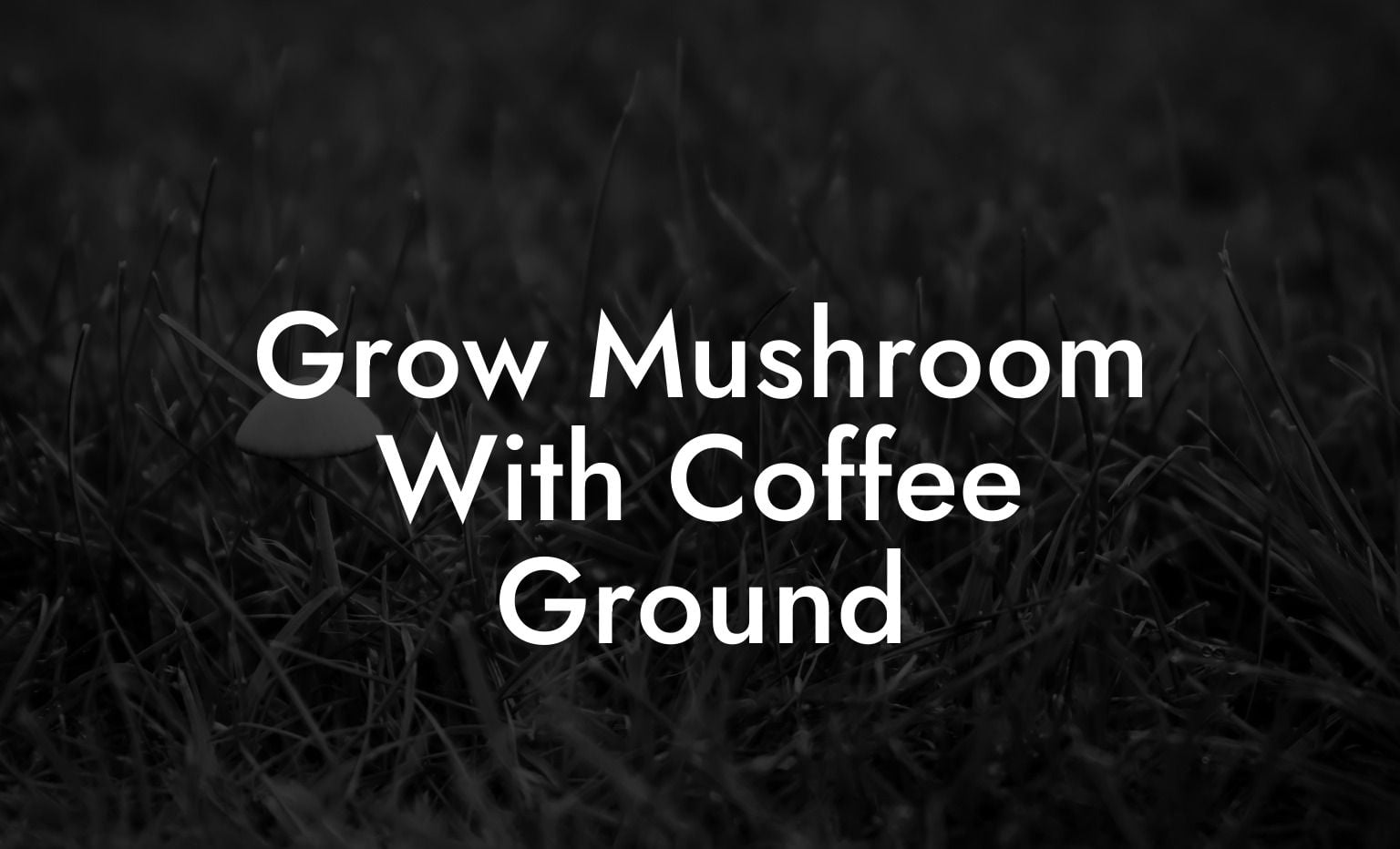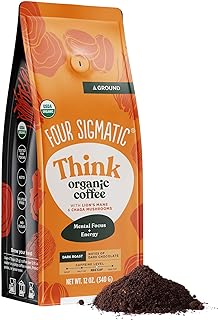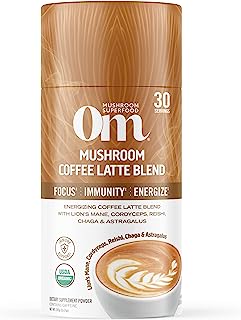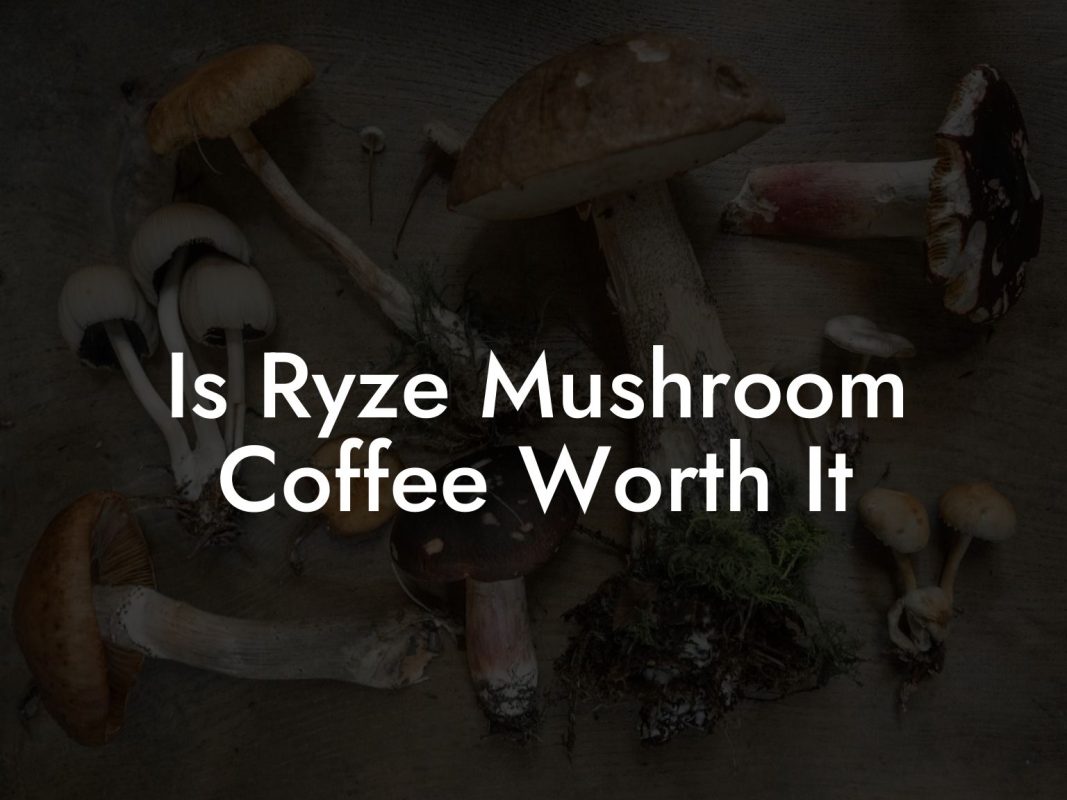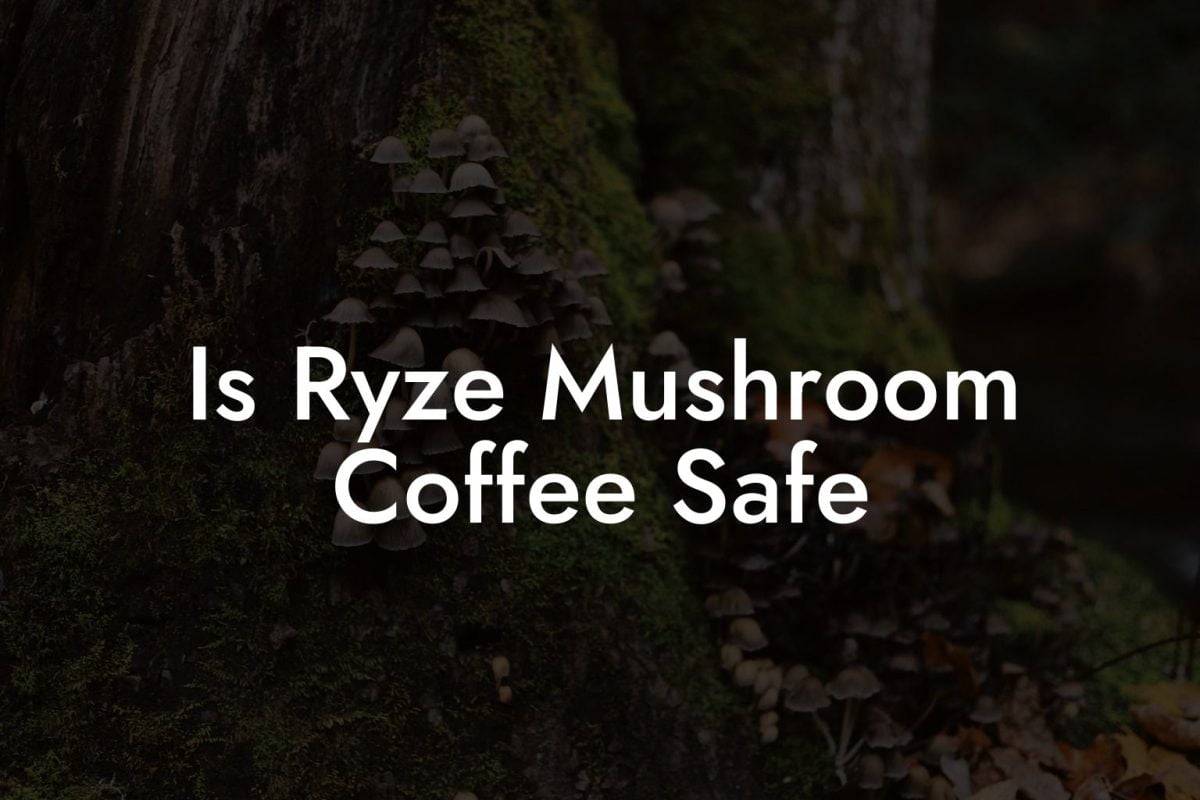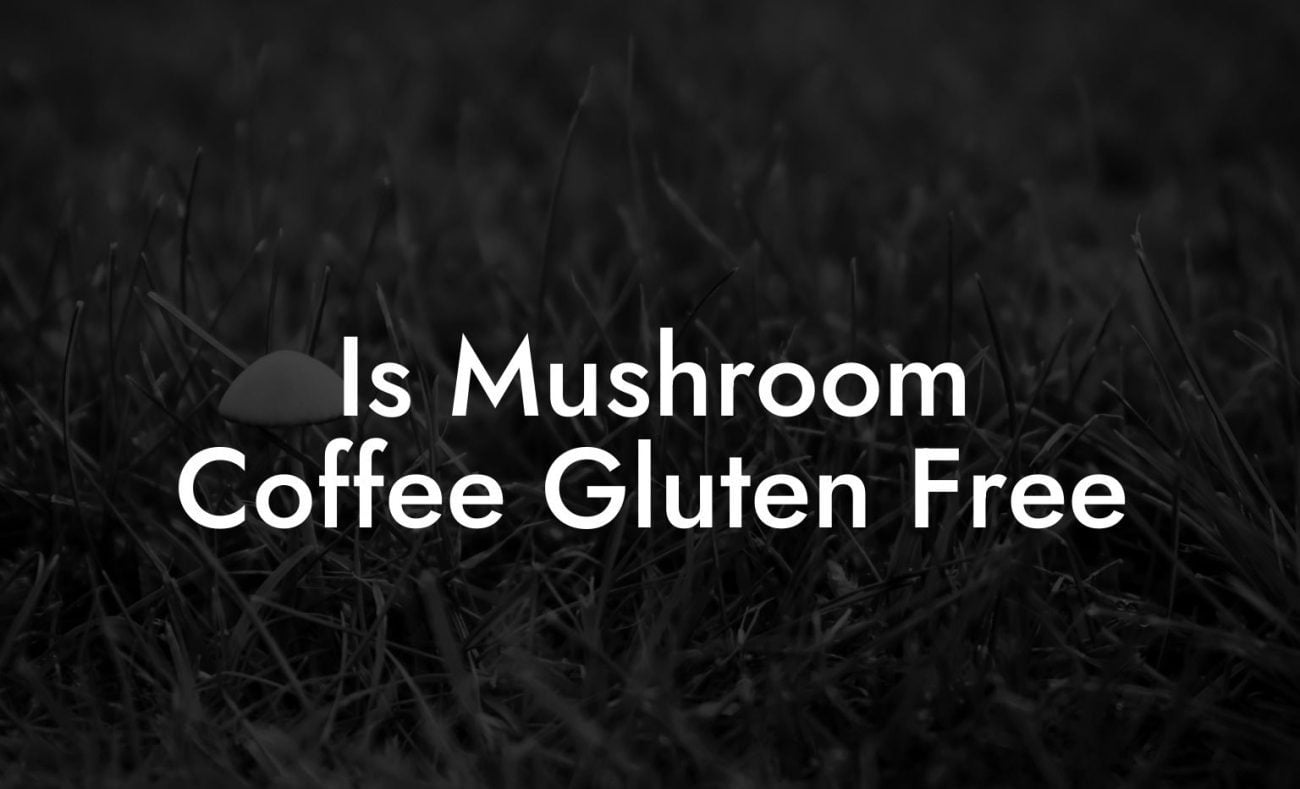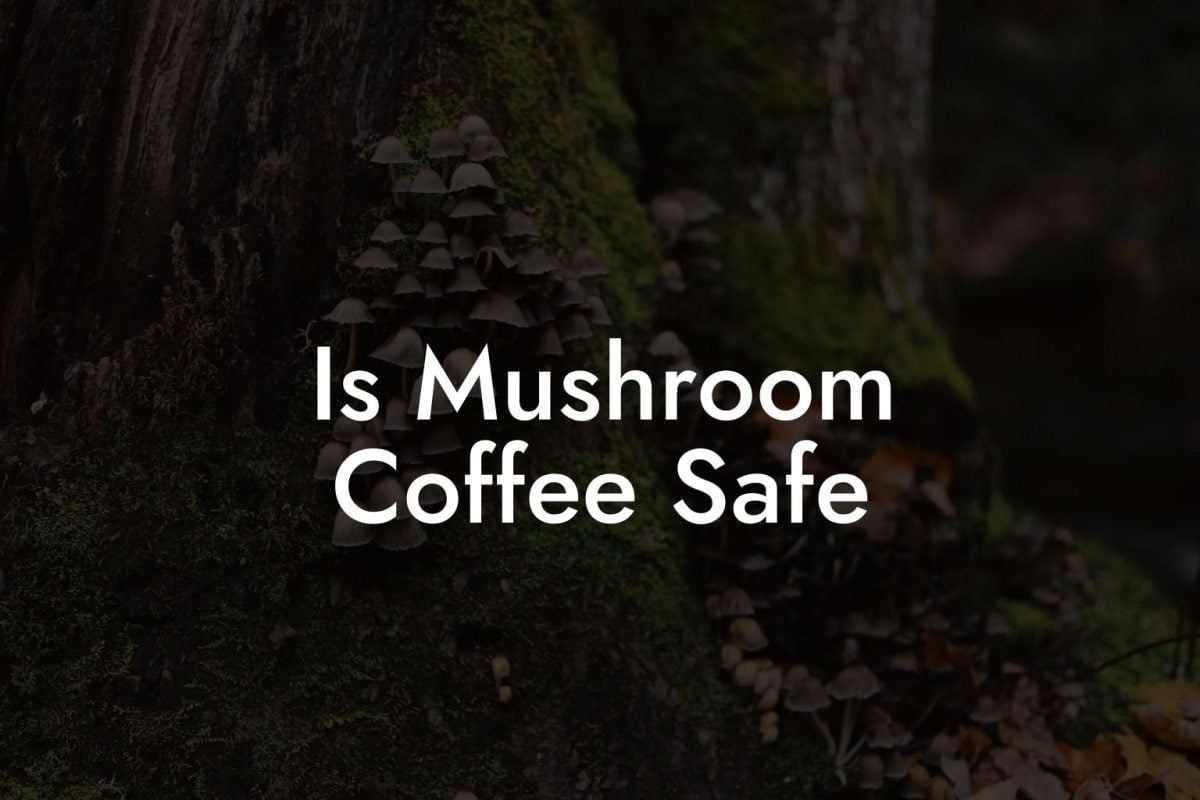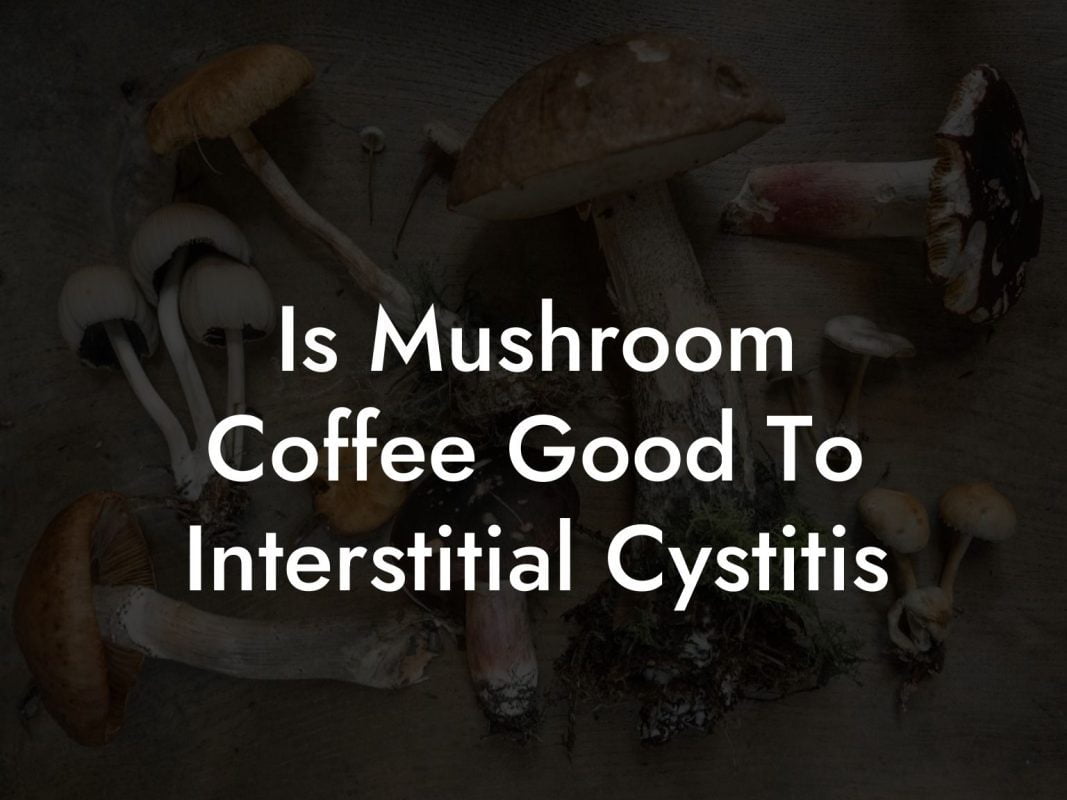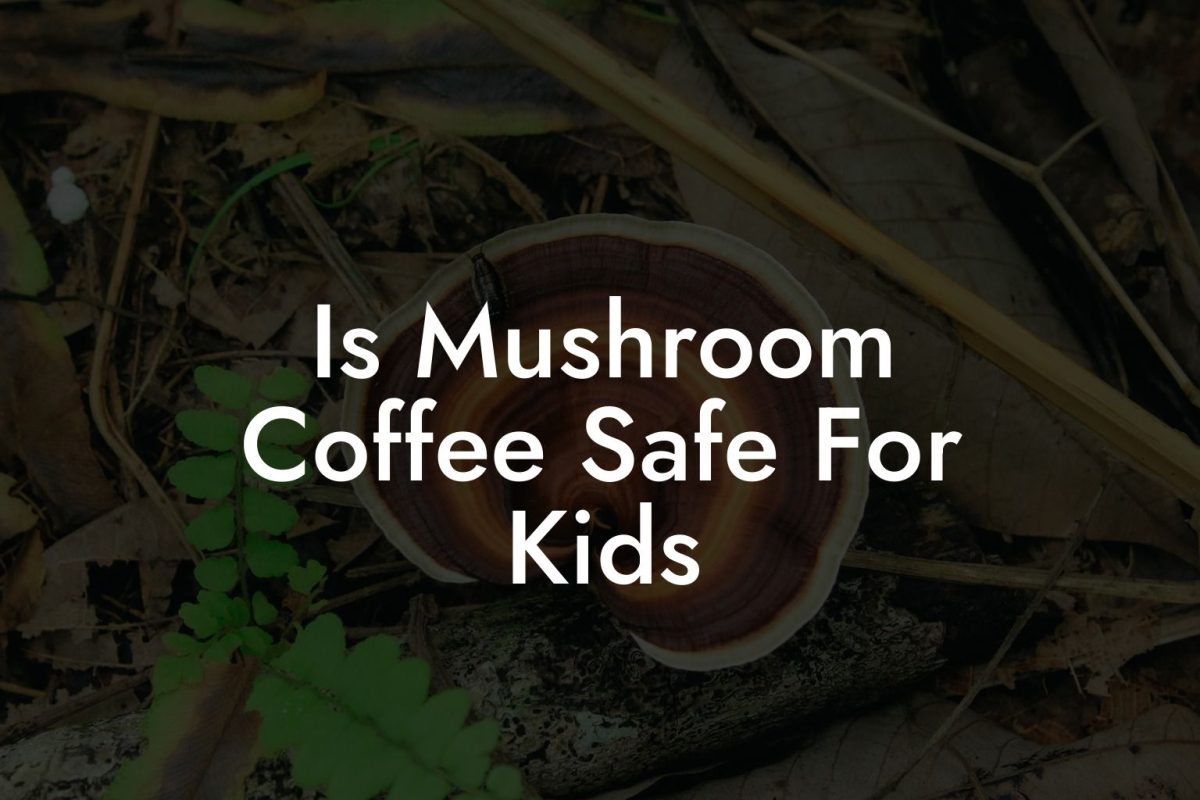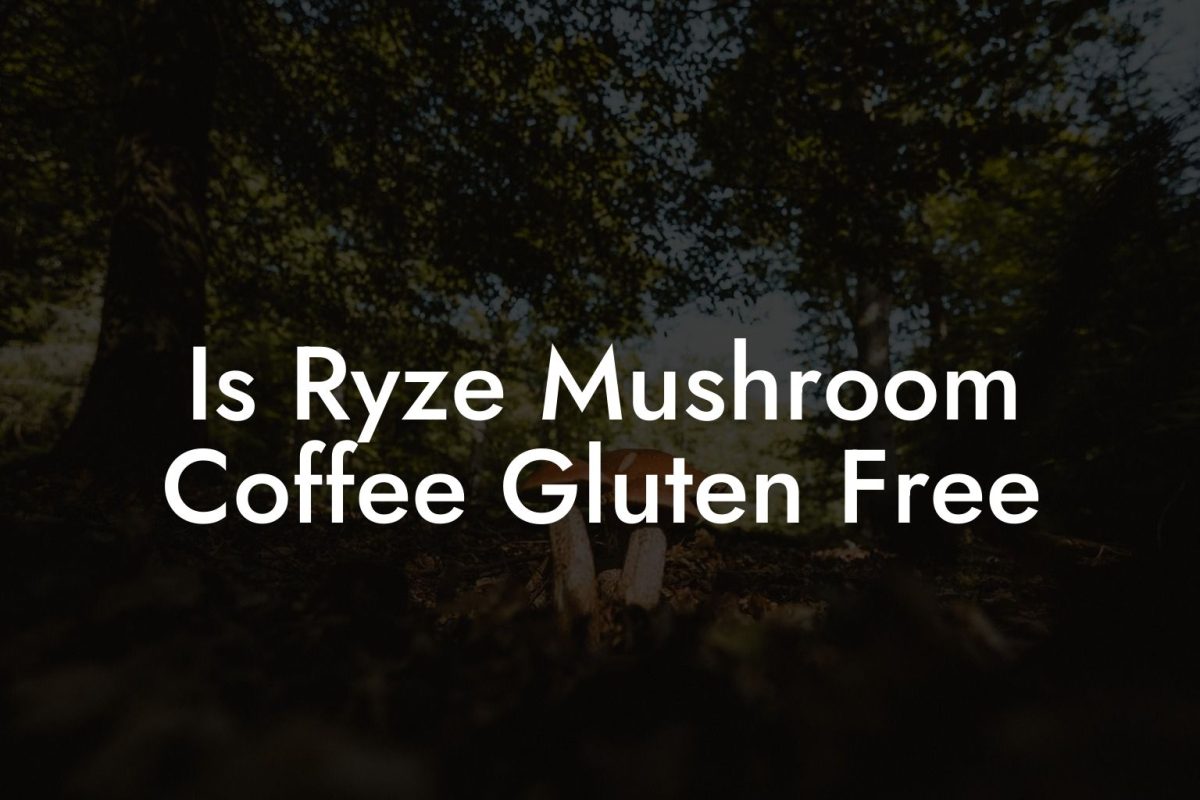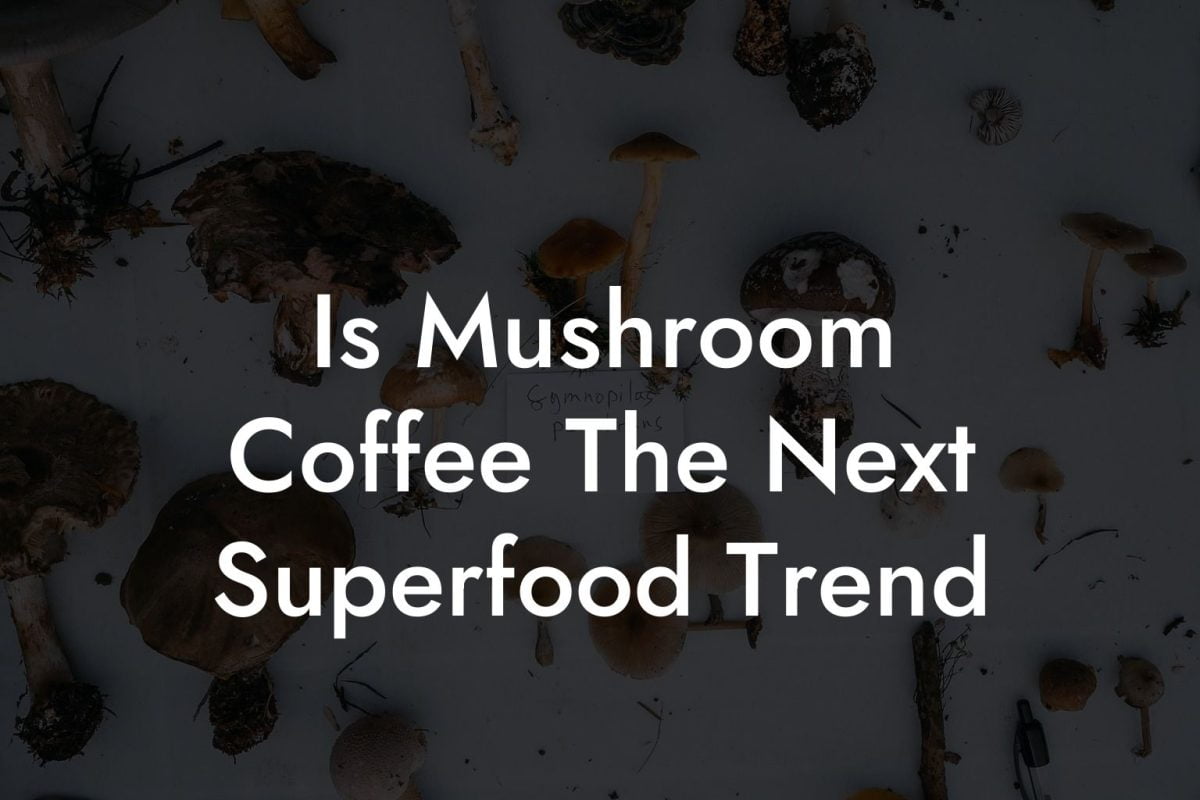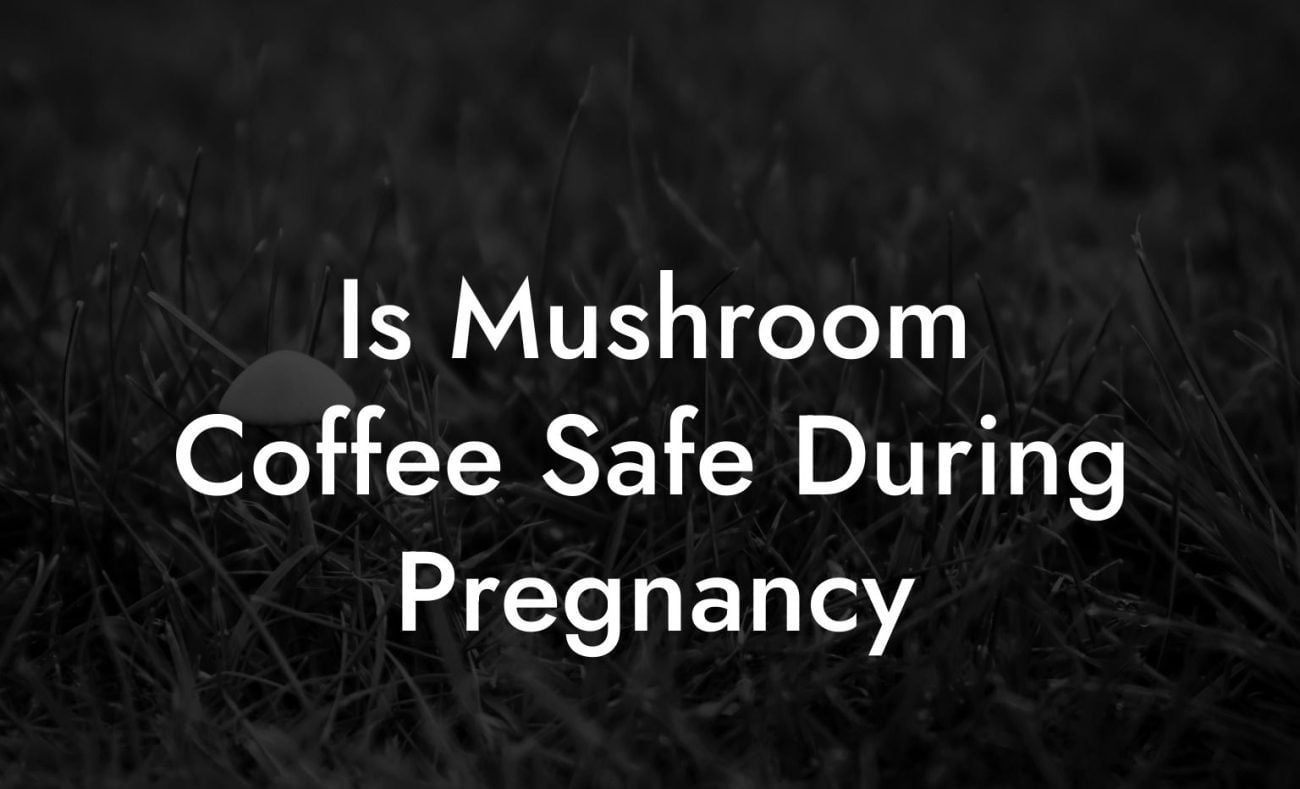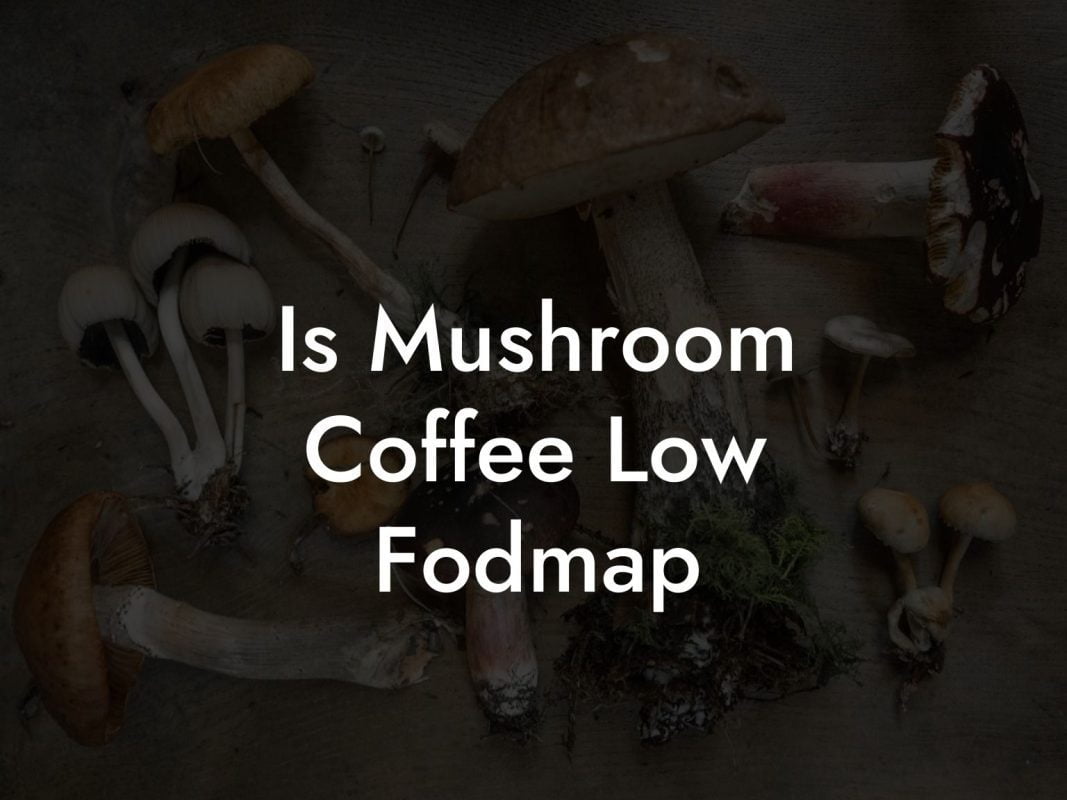Have you ever thought your funky coffee grounds could become the secret ingredient to growing your very own gourmet mushrooms? Imagine sipping your morning coffee and then recycling those used grounds into a lush, sustainable mini mushroom farm right on your kitchen counter. Welcome to the wild, innovative world of growing mushrooms with coffee grounds, a trend that not only jazzes up your eco-friendly credentials but also adds a dash of organic flair to your culinary adventures. Let’s dive into this captivating fusion of caffeine and fungi, where sustainability meets science and creativity!
Quick Links to Useful Sections
- Why Coffee Grounds Are the Ultimate Substrate for Mushrooms
- The Science Behind the Magic: How Mushrooms Love Coffee Grounds
- Mycelium and Its Love Affair with Organic Matter
- Enzymatic Activity and Nutrient Absorption
- Choosing Your Fungal Friends: Mushroom Strains That Thrive on Coffee Grounds
- Oyster Mushrooms
- Shiitake Mushrooms
- Button Mushrooms
- A Step-by-Step Guide to Growing Mushrooms with Coffee Grounds
- Step 1: Sourcing and Preparing Your Coffee Grounds
- Step 2: Inoculating the Substrate with Mushroom Spawn
- Step 3: Incubation and Colonization
- Step 4: Fruiting and Harvesting
- Step 5: Post-Harvest Care and Continuous Cultivation
- Troubleshooting Common Issues in Mushroom Cultivation
- Issue 1: Contamination Woes
- Issue 2: Slow or Stunted Growth
- Issue 3: Poor Fruiting Responses
- Scaling Up: From a Kitchen Experiment to a Full-On Mushroom Farm
- Planning Your Scale-Up
- Investing in Equipment and Automation
- Establishing Market Connections
- Sustainability and Environmental Impact: More Than Just a Trend
- Brewed Delights: Integrating Your Homegrown Mushrooms into Culinary Adventures
- Real-Life Success Stories: From Coffee Waste to Culinary Wonder
- Case Study: The Urban Gardener
- Case Study: The Eco-Chef
- Resources and Community Support: Your Next Steps
- The Future of Mushroom Cultivation: Innovations and Trends
- FAQs on Growing Mushrooms with Coffee Grounds
- Your Journey to a Fungi-Fueled Future
Why Coffee Grounds Are the Ultimate Substrate for Mushrooms
It turns out that those coffee grounds you normally toss into the trash have a secret superpower: they provide the ideal environment for mushroom cultivation. Packed with nitrogen, cellulose, and other nutrients, spent coffee grounds are a treasure trove for mycelium, the underground network of fungal threads that gives mushrooms their structure. When combined with the right conditions, these used grounds can transform into a thriving habitat for edible fungi.
Not only are coffee grounds an excellent growth medium, but using them also helps reduce waste. Recycling coffee grounds into mushroom substrate is a brilliant way to embrace eco-friendly practices, save money, and create a self-sustaining cycle where your morning brew powers your next culinary masterpiece. For the environmentally conscious Gen-Z and millennial trendsetters, it’s the perfect blend of sustainability and creativity.
Plus, imagine the bragging rights when you tell your friends that the very coffee fueling your creativity is also feeding your fungi. With coffee grounds, you're not just making artful brews, you’re cultivating edible magic!
The Science Behind the Magic: How Mushrooms Love Coffee Grounds
At its core, mushroom cultivation on coffee grounds is an amazing marriage of biology and sustainability. Let’s break down the science in a fun, accessible way:
Looking For The Best Mushroom Coffee? You'll Love These:
Mycelium and Its Love Affair with Organic Matter
Mycelium is the thread-like network that forms the foundation of a mushroom's lifecycle. Like a secret agent for fungi, mycelium roams through organic matter, breaking down complex compounds into simpler forms that the mushroom can absorb. Coffee grounds, rich in carbohydrates and nitrogen, act as a high-tech buffet for mycelium. When this network gets cozy in a coffee-based substrate, it proliferates rapidly, setting the stage for a bountiful mushroom harvest.
Enzymatic Activity and Nutrient Absorption
The enzymes produced by mycelium work overtime to convert the nutrients locked within coffee grounds into usable energy. This process, think of it as a gourmet dinner for your fungi, directly impacts the speed and quality of mushroom growth. The optimal pH and moisture content of well-prepared coffee grounds create an environment that’s nearly tailor-made for mushroom development.
When you combine reclaimed coffee grounds with a little water and the right mushroom spores, you kickstart an enzymatic chain reaction that transforms your waste into delicious, nutritious fungi. It’s nature’s very own recycling program, only way cooler.
Choosing Your Fungal Friends: Mushroom Strains That Thrive on Coffee Grounds
Not all mushrooms are created equal, and when it comes to growing on coffee grounds, some strains are naturally better suited than others. Here are a few of the rockstar mushrooms you can get growing in your recycled coffee substrate:
Oyster Mushrooms
Oyster mushrooms are the poster child for coffee ground cultivation. Their rapid growth, minimal maintenance, and hearty texture make them a favorite among both novice cultivators and seasoned mycologists. With their delicate, fan-shaped caps and vibrant colors, oyster mushrooms not only taste great but also look fantastic on any plate or Instagram feed.
Shiitake Mushrooms
If you’re looking to add a robust, earthy flavor to your dishes, shiitake mushrooms are an excellent choice. While they may require a bit more patience and attention than oyster mushrooms, the deep, savory taste they offer is well worth the extra effort. Shiitake mushrooms grown on coffee grounds tend to have a richer, more complex flavor profile that adds umami magic to soups, stews, and stir-fries.
Button Mushrooms
Button mushrooms might be the most ubiquitous on your grocery shelf, but they also make a surprising appearance in coffee ground cultivation. Their versatile flavor and firm texture work beautifully in a variety of dishes, from salads to risottos. While button mushrooms might not have the same curb appeal as their oyster or shiitake cousins, they are a reliable workhorse in the kitchen.
Experiment with different mushroom strains to see which one flourishes best with your coffee ground substrate. The key takeaway? Coffee grounds are a veritable goldmine for mushrooms, offering unparalleled nutritional value and environmental benefits.
A Step-by-Step Guide to Growing Mushrooms with Coffee Grounds
Ready to turn your coffee waste into a flourishing fungi farm? Follow this detailed, step-by-step guide to embark on your mushroom-growing journey. Whether you’re a green-thumbed novice or an eco-savvy DIY enthusiast, these steps will help you cultivate mushrooms that are both tasty and sustainable.
Step 1: Sourcing and Preparing Your Coffee Grounds
The adventure begins with your coffee grounds. To get the best results, use freshly brewed and cooled coffee grounds. If you’re a habitual coffee drinker, you might already have a generous stash waiting to be recycled. Here’s what you need to do:
- Collect: Save your used coffee grounds in a clean container. Avoid using grounds with additives like milk or sugar as these can interfere with fungal growth.
- Cool: Allow the coffee grounds to cool completely. Warm grounds can encourage contamination and harm the mycelium.
- Mix with Other Substrates: Although coffee grounds provide plenty of nutrients, mixing them with other substrates such as sawdust or straw can improve texture and drainage. Experiment with different ratios to optimize your substrate.
Pro tip: Always sterilize or pasteurize your substrate mixture if possible. This reduces the risk of competing molds or bacteria and sets your mushrooms up for success.
Step 2: Inoculating the Substrate with Mushroom Spawn
Now that your substrate is ready, it’s time to introduce your mushroom spawn, the “seeds” of your fungal future. Select the appropriate spawn for the mushroom strain you’ve chosen (oyster, shiitake, button, etc.) and follow these steps:
- Mix It Up: Gently fold the mushroom spawn into your coffee ground substrate. Ensure an even distribution so that the mycelium can colonize every nook and cranny.
- Contain: Transfer the inoculated substrate into clean, air-permeable bags or containers. Many enthusiasts repurpose plastic containers or even repurposed coffee canisters for this phase.
- Seal and Store: Seal the container loosely to allow some airflow and place it in a warm, dark spot to kickstart the mycelial colonization process. Ideal temperatures typically range between 60°F and 75°F (15°C to 24°C).
The initial colonization phase is crucial. Patience is key as the mycelium slowly but steadily infiltrates your substrate, preparing it for the fruiting phase.
Step 3: Incubation and Colonization
During the incubation period, the mushroom spawn will work its magic, binding with the coffee grounds and creating a robust mycelial network. Here’s how to ensure a successful colonization:
- Monitor Moisture: Keep the substrate moist, but not soggy. A spray bottle with water is an excellent tool to maintain humidity without drenching the substrate.
- Temperature and Darkness: Maintain a stable environment with the recommended temperature range and darkness, which mimics the natural underground conditions mushrooms favor.
- Check Progress: Within 1-2 weeks, you should start to see the white, thread-like mycelium spreading throughout the substrate. This is a green light to move on to the next phase.
If you notice any unusual colors or smells, it may be a sign of contamination. In that case, discard the affected batch and start again to ensure a healthy growth cycle.
Step 4: Fruiting and Harvesting
Once your mycelium has fully colonized the substrate, it’s time to introduce the conditions that trigger mushroom fruiting. This phase transforms your dormant substrate into a vibrant, mushroom-bearing marvel. Follow these tips for a successful fruiting stage:
- Light Exposure: Provide indirect light or a low-intensity fluorescent light source. Mushrooms do not need sunlight, but a bit of ambient light can stimulate fruiting.
- Humidity Boost: Increase the humidity to around 80-90%. You can do this by misting your setup or placing a humidifier nearby.
- Fresh Air: Ensure good air circulation. Stale air can lead to poor mushroom development, so consider opening your container lightly or using a fan on a low setting.
- Monitor Growth: Within days to a week, you should start to see small mushroom pins form. These will eventually develop into full-sized mushrooms ready for harvest!
Harvest your mushrooms when they reach the desired size. Use a clean knife to cut them carefully at the base, and then allow for subsequent flushes; often, the mycelium will produce several rounds of fruiting.
Step 5: Post-Harvest Care and Continuous Cultivation
The harvesting phase is not the end of the story. With proper care, your spent substrate might even produce another flush of mushrooms. Here’s how to maximize your yield:
- Rehydrate Gently: After the first harvest, mist the substrate lightly to reintroduce moisture and encourage further fruiting.
- Store Appropriately: If you’re done harvesting, consider composting the residual substrate to enrich your garden soil, completing the sustainable loop.
- Experiment with Different Methods: Each batch is a learning opportunity. Tweak factors like substrate mix, humidity levels, and colonization time to refine your technique.
With each subsequent cycle, you’ll gain invaluable insights into what makes your mushrooms tick. Enjoy the process as much as the delicious end product!
Troubleshooting Common Issues in Mushroom Cultivation
Even in the most carefully curated mushroom setups, hiccups can occur. But don’t fret, here’s a handy guide to overcoming common issues, complete with down-to-earth solutions:
Issue 1: Contamination Woes
One of the most common challenges in mushroom cultivation is contamination from unwanted molds or bacteria. If you see odd colors (green, black, or pink patches) or detect a foul smell, your substrate might be compromised.
- Prevention: Always sterilize or pasteurize your coffee grounds and mixing ingredients before inoculation.
- Early Detection: Inspect your substrate regularly. Catching contamination early means you can sometimes remove the affected portions without sacrificing the entire batch.
- Environment Control: Use clean tools, wear gloves, and maintain a controlled environment where temperature and humidity are managed carefully.
Issue 2: Slow or Stunted Growth
If your mycelium is slow to colonize or the mushrooms seem to be stunted, a few factors might need tweaking:
- Moisture Levels: The substrate could either be too dry or too wet. Aim for damp but not saturated coffee grounds.
- Temperature Adjustments: Ensure the environment is within the optimal temperature range. Too cold, and the mycelium will slow down; too hot, and you risk contamination.
- Nutrient Balance: Sometimes the proportion of coffee grounds to other substrates can influence growth. Experiment with different ratios to find the sweet spot.
Issue 3: Poor Fruiting Responses
When your mycelium seems to have everything it needs but isn’t fruiting properly, it might be time to revisit your fruiting conditions:
- Light and Airflow: Ensure that the fruiting chamber or area is receiving enough indirect light and fresh air. Adjust your setup to replicate natural conditions.
- Humidity Boost: If the air is too dry, consider increasing humidity. A misting bottle and a hygrometer (a device to measure humidity) can be invaluable here.
- Timing: Sometimes, patience is the name of the game. Give your mycelium enough time to trigger the fruiting process, but keep an eye on any signs of stress.
Remember, every strain and every batch is a unique experiment. With each challenge, you learn new ways to adjust your process, making your mushroom-cultivation journey an evolving adventure.
Scaling Up: From a Kitchen Experiment to a Full-On Mushroom Farm
What starts as a fun, eco-friendly experiment in your kitchen can quickly evolve into a larger-scale operation if you're up for the challenge. The process of growing mushrooms with coffee grounds scales surprisingly well and can even be transformed into a micro-farming venture.
For those with entrepreneurial spirits, expanding your mushroom cultivation can be both profitable and gratifying. Imagine repurposing the daily coffee grounds from your favorite café or office, and in return, providing fresh, organically grown mushrooms to your community. Here’s how you can make that transition:
Planning Your Scale-Up
The first step in expanding is to create a comprehensive plan. Consider the following:
- Supply and Distribution: Identify reliable sources of coffee grounds, a local coffee shop, office spaces, or even your own household supply.
- Growing Space: As your output increases, you may need dedicated space. This could be a small room, a greenhouse, or even a repurposed storage area.
- Quality Control: Maintain strict hygiene and environmental standards to ensure each batch of substrate remains free from contamination.
Investing in Equipment and Automation
When scaling up, automation can become your best friend. From automated misting systems and temperature-controlled incubators to specialized harvesting tools, investing in the right equipment can simplify the process and boost efficiency.
Establishing Market Connections
Once you have a steady supply of mushrooms, explore local farmers’ markets, restaurants, and health food stores for potential partnerships. The story behind your mushrooms, the eco-friendly, coffee-based cultivation process, can be a compelling selling point.
Scaling up doesn’t have to be a daunting task. With careful planning, a keen eye for quality, and a dash of entrepreneurial spirit, you can transform your small-scale project into a thriving micro-farm that contributes to both community wellbeing and environmental sustainability.
Sustainability and Environmental Impact: More Than Just a Trend
In an era where sustainable living isn’t just a buzzword but a way of life, growing mushrooms with coffee grounds hits the sweet spot. It’s an eco-friendly method that not only recycles waste but also contributes to reducing your overall carbon footprint.
By repurposing coffee grounds, you’re giving new life to what was once considered waste, tapping into a cycle that’s as environmentally responsible as it is innovative. This practice minimizes landfill contributions, lowers resource consumption, and even reduces the need for synthetic fertilizers in traditional farming.
For the modern eco-warrior and sustainability advocate, growing mushrooms on coffee grounds is more than just a hobby, it’s a statement. It's a practical, hands-on solution that embodies the principles of reuse, reduction, and eco-conscious innovation. Every mushroom harvested is a win for both your plate and the planet.
Brewed Delights: Integrating Your Homegrown Mushrooms into Culinary Adventures
Once your mushrooms are ready, don’t let them hide in a corner, show them off in your kitchen creations! The versatility of mushrooms grown on coffee grounds is astounding, adding a unique twist to both classic and creative recipes.
Imagine whipping up a velvety mushroom soup, a robust risotto, or a gourmet pizza, all featuring mushrooms with a story. Each bite carries the essence of sustainability and a dash of artisanal charm, proving that eco-friendly practices can also be deliciously indulgent.
Pro tip: Experiment with flavor pairings that complement the earthy, slightly nutty taste of your mushrooms. They also pair beautifully with ingredients like garlic, thyme, and truffle oil. And if you’re feeling extra adventurous, why not try incorporating them into your very own mushroom-infused coffee? Yes, you read that right, an innovative twist on your morning brew!
Real-Life Success Stories: From Coffee Waste to Culinary Wonder
The beauty of growing mushrooms with coffee grounds isn’t solely in the process, but in the stories of those who have taken the plunge. Across the globe, DIY mushroom cultivators and sustainable food enthusiasts have turned their coffee waste into a source of nutritious, flavorful mushrooms.
Case Study: The Urban Gardener
Meet Alex, a city dweller with a passion for urban farming and a thirst for sustainable living. Frustrated with his ever-growing pile of used coffee grounds, Alex decided to experiment and soon discovered that oyster mushrooms were the perfect answer. Using repurposed coffee from his local café, he began a small-scale mushroom farm on his apartment balcony. Within weeks, his once-neglected leftovers had transformed into a flourishing crop of mushrooms that he proudly shared with neighbors and on social media.
Case Study: The Eco-Chef
Then there’s Jamie, a young chef enamored with culinary innovation and eco-conscious practices. By integrating mushrooms grown on coffee grounds into gourmet recipes, Jamie not only elevated his dishes but also sparked conversations about sustainability in the restaurant world. His creative approach to food garnered a loyal following and even landed him features in local food blogs and magazines.
These success stories are a testament to the power of creative thinking, resourcefulness, and a genuine commitment to a greener future. Whether you’re an urban gardener, a culinary innovator, or simply someone who believes in reducing waste while having fun, the journey from coffee waste to mushroom wonder is an adventure worth trying.
Resources and Community Support: Your Next Steps
Are you itching to launch your own coffee-ground mushroom project? It’s easier than you think! Online communities, local workshops, and eco-friendly forums are bursting with tips, tutorials, and success stories that can guide you along the way.
Look for local urban farming groups, join social media pages dedicated to mushroom cultivation, or check out YouTube channels offering step-by-step visual guides. Moreover, many universities and environmental organizations provide free resources and even kits that help beginners get started.
Don’t hesitate to engage with fellow enthusiasts and experts. Every shared tip, every community meet-up, and every online discussion is a step toward perfecting your craft, and towards inspiring others to embrace this beautiful cycle of sustainability. Whether you're experimenting in your kitchen or eyeing a full-scale micro-farm, remember that every mushroom you grow adds to the global movement of eco-conscious innovation.
The Future of Mushroom Cultivation: Innovations and Trends
The landscape of sustainable living is constantly evolving, and mushroom cultivation with coffee grounds is at the forefront of this green revolution. With advances in biotechnology, automation, and community science, the future promises more efficient, resilient, and innovative methods for converting waste into gourmet delights.
Emerging trends include integrating IoT (Internet of Things) sensors to monitor humidity, temperature, and growth metrics in real time, ensuring each batch reaches its full potential. Researchers are also exploring new hybrid substrates that enhance nutrient profiles, making it possible to cultivate a wider variety of mushroom strains on coffee grounds.
As more people adopt sustainable practices, the collective knowledge and passion of the community will undoubtedly drive further innovations. The horizon is bright for those who dare to blend art, science, and sustainability into one revolutionary endeavor.
FAQs on Growing Mushrooms with Coffee Grounds
Here are some frequently asked questions that capture the essence of growing mushrooms with coffee grounds. Whether you’re a curious newbie or a seasoned cultivator, these insights are sure to help you on your journey.
1. Can I really grow mushrooms using only coffee grounds?
Absolutely! While coffee grounds work best when mixed with additional substrates like sawdust or straw, many enthusiasts have successfully grown mushrooms using mostly spent coffee grounds.
2. What type of mushrooms grow best on coffee grounds?
Oyster mushrooms are the most popular choice due to their rapid growth and minimal maintenance. However, shiitake and button mushrooms can also be cultivated with a bit of tweaking.
3. Do I need to sterilize the coffee grounds before using them?
Yes, sterilizing or pasteurizing your coffee grounds and any additional substrates helps reduce the risk of contamination and ensures a healthy environment for the mycelium.
4. How long does it take for mushrooms to grow using this method?
From inoculation to harvest, the process typically takes between 3 to 6 weeks. The exact time can vary depending on environmental conditions such as temperature, humidity, and the type of mushroom strain used.
5. Is mushroom growing with coffee grounds suitable for beginners?
Definitely! With thorough preparation, a bit of patience, and proper guidance, even beginners can enjoy a successful mushroom cultivation experience.
6. What are the environmental benefits of growing mushrooms on coffee grounds?
This method repurposes waste, reduces landfill contributions, lowers the need for synthetic fertilizers, and ultimately supports a more sustainable lifestyle.
7. Can I reuse my coffee grounds substrate for multiple harvests?
In some cases, yes. With proper post-harvest care and rehydration, you can often obtain a second or even third flush of mushrooms before the substrate is exhausted.
8. What are the signs of contamination and how can I prevent it?
Signs include unusual colors (green, black, or pink), fuzzy growths, and unpleasant odors. Prevent contamination by sterilizing your substrate, maintaining cleanliness, and monitoring humidity levels closely.
9. How much coffee grounds do I need for a small batch?
A small batch can start with about 2-3 cups of used coffee grounds. Adjust the quantities based on your container size and the type of mushroom you’re growing.
10. Can I grow mushrooms with coffee grounds indoors?
Yes! Many successful cultivators grow mushrooms indoors. Just be sure to create a controlled environment with proper humidity, temperature, and airflow conditions.
Your Journey to a Fungi-Fueled Future
Growing mushrooms with coffee grounds is more than just an innovative DIY project, it’s a lifestyle choice that channels the energy of recycling, nature, and sustainability into every flavorful bite. As you embark on your mycological adventure, remember that every experiment, every harvested mushroom, and every shared tip contributes to the growing movement of eco-friendly living.
Whether you’re repurposing your daily coffee waste or creating a multi-flush micro-farm, the journey is as much about rediscovering nature’s bounty as it is about making a tangible difference in our world. Embrace the challenges, enjoy the process, and share your successes with a community that values creativity, sustainability, and a touch of delicious irreverence.
So, what are you waiting for? It’s time to roll up your sleeves, brew a fresh cup of inspiration, and transform your everyday coffee grounds into a vibrant, living mushroom wonderland. Here’s to a future where sustainability is not only smart, but also outrageously fun!
Looking For The Best Mushroom Coffee? You'll Love These:
Useful Interruption: Dive deeper into the world of Mushroom Coffee with our most popular sections. If there is anything you think is missing or anything you would love for us to write about, just give us a shout.
- Mushroom Coffee Equipment & Product Reviews
- Mushroom Coffee Recipes & Creative Variations
- Mushroom Coffee Guides & Troubleshooting
- Mushroom Coffee Brewing & Preparation Techniques
- Model Rocket Advanced Rocketry & Innovations
- Mushroom Coffee Fundamentals
- Model Rocket Equipment Reviews & Digital Tools
- Mushroom Coffee Health Benefits & Wellness
- Mushroom Coffee Mycology & Scientific Insights
- Mushroom Coffee Community, Lifestyle & Engagement
I tried mushroom coffee this morning and told my friend, "This brew is spore-tacular!" He shot back, "Guess that's why it's such a cap-tivating way to kickstart your day!"

